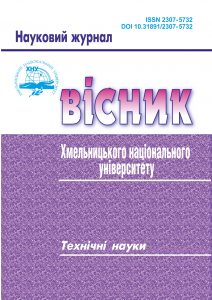A TREE DECISION METHOD IN COMPUTER DIAGNOSTICS
DOI:
https://doi.org/10.31891/2307-5732-2023-329-6-266-273Keywords:
computer diagnostics, database, decision making, decision tree, entropy and information analysisAbstract
The paper considers the issue of decision-making using classification trees during the diagnosis of injuries. An analysis of the use of methods of working with archival databases accumulated in hospitals in the form of paper files was carried out. It is shown that after computerization of patient data, it is advisable to implement a decision tree system for better classification and patient orientation. This approach will allow identifying patients with the same disease, diagnosis or symptom. After creating a decision tree algorithm, it is necessary to select a program that would satisfy the alphabet of the input data. An example of using the developed decision tree to determine a closed fracture is given. The proposed solutions will make it possible to solve complex tasks and make decisions related to the design, development and management of software and hardware systems of computer diagnostics in medical and other fields related to the processing and classification of database personalities according to specified parameters, as well as in conditions of uncertainty. In the process of building a decision tree for deriving the norm and pathology during computer diagnostics of a closed fracture, it is proposed to enter a three-parameter value instead of a two-parameter value. In this case, the number of signs increases dramatically, but at the same time, the possibility of errors of the first and second kind also increases. The analysis of the informativeness of the signs shows that the most informative independent variable (sign of the image) is a change in shape, immediately after it is an indicator of the degree of pain, and only then swelling and crepitation. If the classification is carried out in the same sequence, then the entropy-informational analysis allows ranking the features of the image according to their informativeness. In order to overcome the so-called specificity, in which 92.3% of the diagnosed patients classified by the classifier as "pathology" are actually sick, and 7.7%, on the contrary, are healthy, it is necessary to consider independent attributes more carefully.

